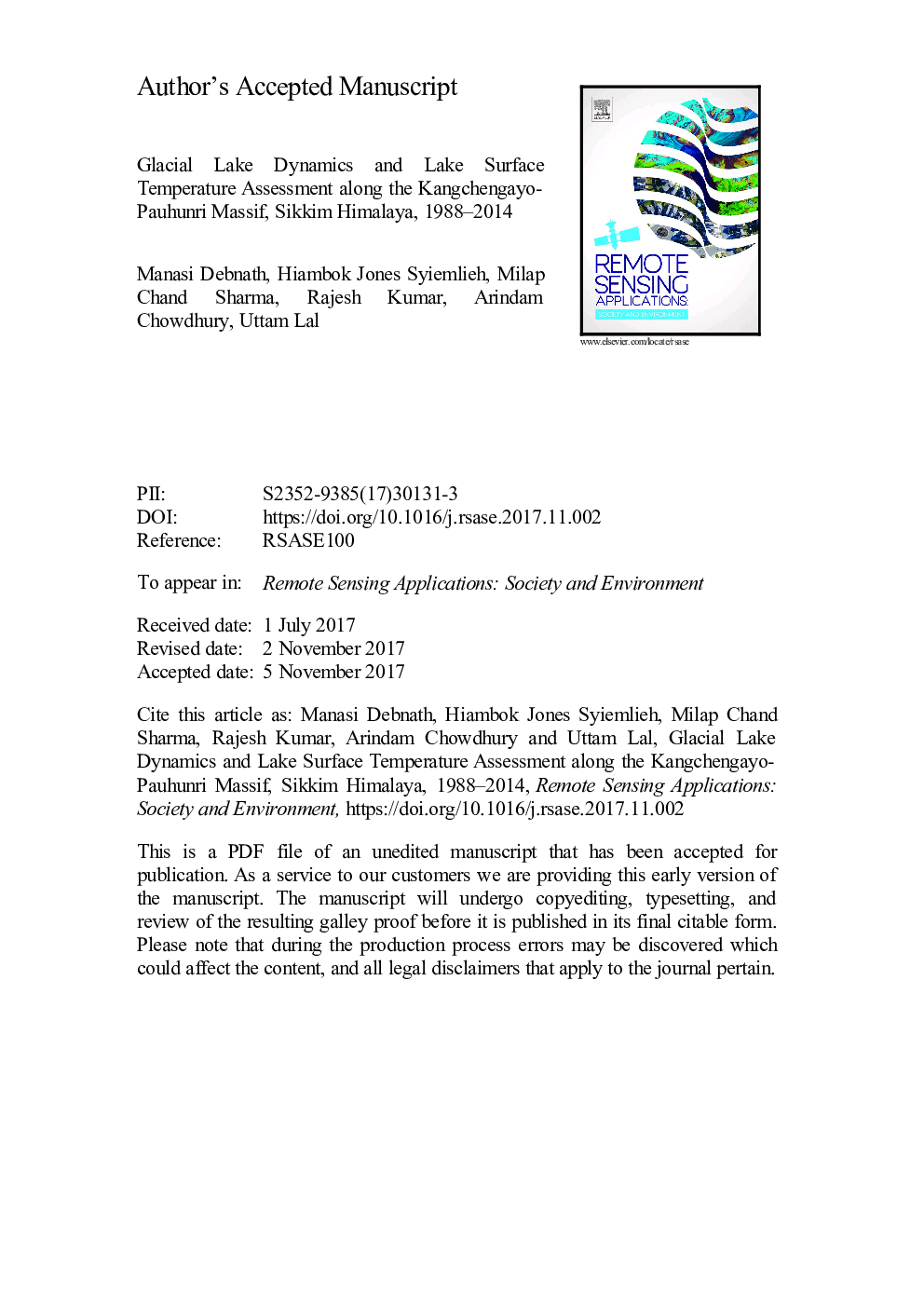| Article ID | Journal | Published Year | Pages | File Type |
|---|---|---|---|---|
| 8866360 | Remote Sensing Applications: Society and Environment | 2018 | 46 Pages |
Abstract
Glacial lakes in the Sikkim Himalaya played a most significant role regarding probable glacial hazard related risk due to several natural or anthropogenic factors, such as rapid melting of glacial ice as a result of climatic variability; landslide or severe earthquake etc. which may cause Glacial Lake Outburst Flood (GLOF). Thus, burning issue of GLOF and its devastating impact on society, especially on mushroom like continuous growing of socio-economic architectures and tourism along the valley necessitate attention on the glacial lake analysis of Kangchengayo-Pauhunri Massif, a part of Sikkim Himalaya. The main focus of this study is on lake area dynamics and on assessment of lake surface temperature (LST) using Landsat TM, ETM+ and OLI-TIRS sensor images of 1988, 2001 and 2014 that were acquired between late October and November (post-ablation period). The glacial lakes have been identified and categorized on the basis of different indices (NDSI and NDWI), elimination of impurities (e.g. shadow, frozen ice etc.) and visual inspection based on PAN-sharpened and Google Earth images. The thermal bands of OLI-TIRS, ETM+ and TM images have been used for calculating the LST on the basis of emissivity values. In the study region, the proximity of glacier, aspect and altitude above mean sea level are the main factors that have strong influence on lake area dynamics as well as on LST. The glacial lake area change detection study shows that the glacial lake area has been expanded by 8.38% from 1988 to 2014. The result also shows that the large expansion of glacial lakes area has occurred for the large sized lakes at high altitudinal zones between 5000Â m and 5400Â m on the northern aspect of the Kangchengayo-Pauhunri Massif. The lake surface temperature also increases more on the large sized glacial lakes which are situated on the higher elevation and have a low temperature. The proglacial lakes of the northern aspect are more vulnerable to lake surface temperature changes. In addition, the warming monsoon and post-monsoon air temperature are enhancing the lake surface area by contributing glacier meltwater to the proglacial lakes. Hence, large spatial expansion of proglacial lakes is also observed.
Related Topics
Physical Sciences and Engineering
Earth and Planetary Sciences
Computers in Earth Sciences
Authors
Manasi Debnath, Hiambok Jones Syiemlieh, Milap Chand Sharma, Rajesh Kumar, Arindam Chowdhury, Uttam Lal,
